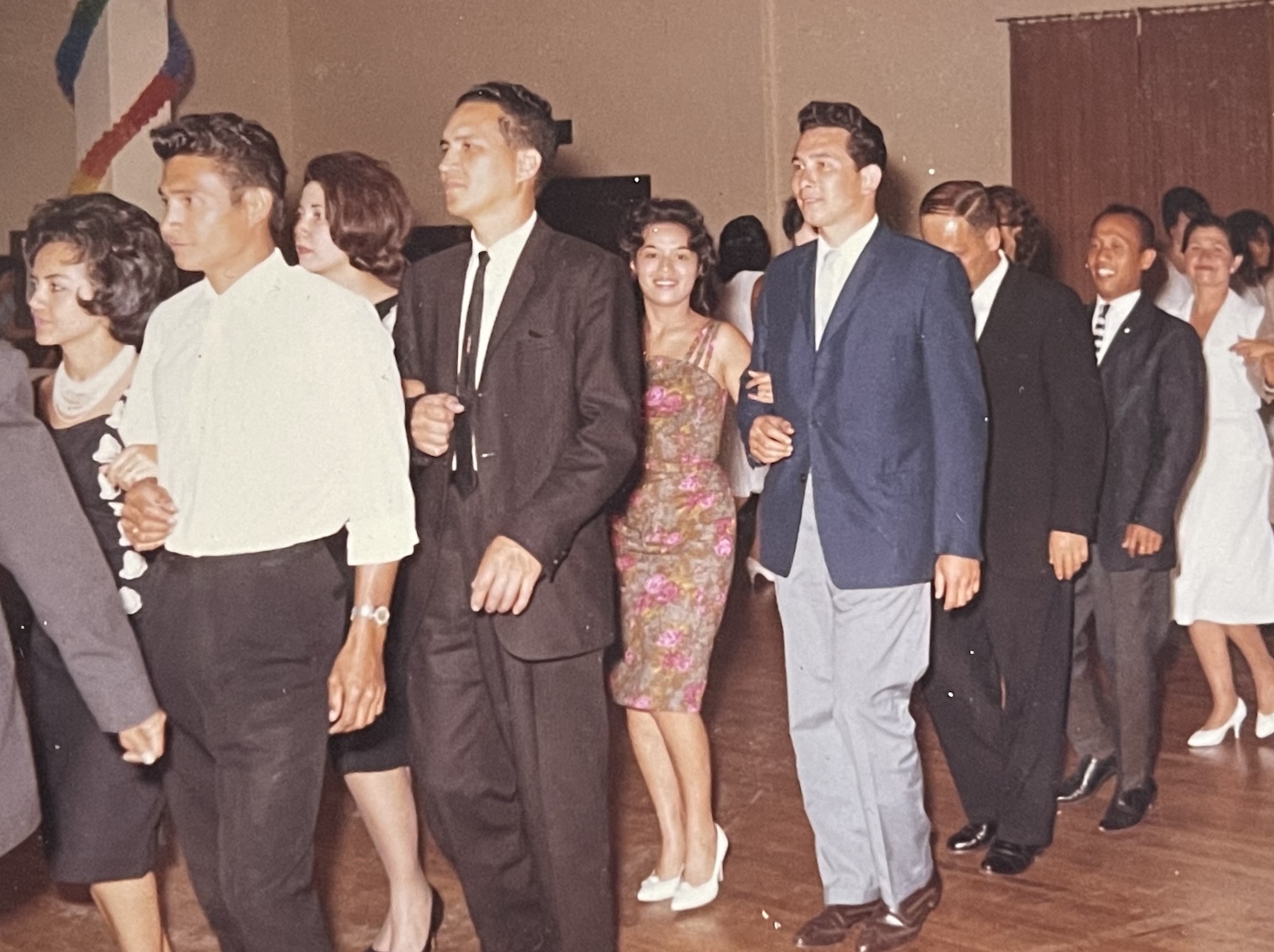San Diego, CA
How Dutch Indonesians Found Their Home in San Diego | San Diego Magazine
The savory scents of Indonesian ayam pedis and Dutch bitterballen and the convivial tunes of The Tielman Brothers drift over the Mission Bay as a winding line forms under the bright blue tents that cover the Dutch Indos in San Diego potluck buffet. Kids run around, their parents lounging in lawn chairs, as conversations weave from Dutch to English. A couple in their 90s dances on the grass. It’s a party—or actually, a kumpulan.
Today’s kumpulan (Indonesian for social gathering) is the brainchild of Valley Center native and third generation “Dutch Indo” Andrea Matthies, 51. Matthies founded the social group Dutch Indos in San Diego in 2014 to connect the large—but fragmented—local Dutch Indonesian community. “Most Indos of my generation grew up in English-speaking households, not really knowing much about their background,” Matthies explains. She wanted to get back in touch with her Dutch Indonesian roots and community. As it turns out, others did too.
But what is Dutch Indonesian is not exactly easy to answer. “It usually takes me about 20 minutes to explain it to someone,” Matthies laughs. Her spiel usually goes something like this: Her grandparents, Herman and Paula MacMootry, immigrated to America in October 1960 with their four teenage children, including Matties’ mother, Brenda MacMootry-Gruber. The family departed from the Netherlands, but they all had been born in the Dutch East Indies, a former Dutch colony now known as Indonesia.
The MacMootrys were part of a mixed Eurasian community, known as Dutch Indonesians or “Indos.” When Indonesia declared independence from the Netherlands in 1945, the Indo community was violently targeted by nationalist soldiers, and many fled to the Netherlands. But the Netherlands was not the most welcoming place for the nearly 350,000 Dutch Indonesians who moved there. Dutch politicians openly questioned their ability to integrate, and many struggled to find work in the midst of a post-war job shortage.

Families who wanted to move to America initially faced strict visa regulations for Asian immigrants. They had to prove that at least 75 percent of their ancestors were of European descent. But when a major flood hit the Netherlands in the 1950s, a special refugee act opened up tens of thousands of American refugee visas. Although the act was meant for displaced Dutch farmers, the Dutch government put thousands of Dutch Indonesians on the list and actively encouraged more to apply.
A government film titled Een Plaatsje In De Zon (meaning “a place in the sun”) promoted California as the place to be: a distant paradise “where the sun almost gives a continuous representation of what you have always imagined your new home to be.” San Diego specifically, with its leisurely lifestyle, proximity to Tijuana, and bustling market scenes with fresh produce that Dutch Indonesians knew from back home, would make a fine home. From the late 1950s to early 1960s, about 35,000 Dutch Indonesians packed their bags and left for the United States.
Most Dutch Indonesians adapted to their new life as quickly as possible, speaking English and raising their kids as Americans. But in San Diego, the first ever Indo club in America, the DURF, kept a piece of home alive.
“DURF stands for Dutch Recreational Fellowship,” explains Matthies, who is currently making a documentary about the club with her husband. Friends of Matthies’s family, Fred and Edith Attinger, founded the club in 1961. They organized elaborate dinners, dances, and plays and even invited local politicians to their events.
At its height, DURF had more than 100 members and regularly featured in local media. “My grandmother volunteered in the kitchen and my mother and aunt took part in dances and skits,” Matthies says. She still remembers attending the DURF’s Fourth of July celebration as a child. But as her generation lost interest, membership dwindled. The club folded in 1981.
Matthies eventually began researching her family tree and reconnected to family members in the Netherlands. She learned more about Dutch Indonesian history through The Indo Project, which makes information available for English-speaking Indos. At the annual Holland Festival in Long Beach, she met more Dutch Indonesians who had grown up in the US and began hoping to help the Indo community in San Diego celebrate their heritage.
“I wanted to revive DURF’s spirit with Dutch Indos in San Diego,” Matthies says. What started as a Facebook group where local Indos could connect and exchange stories is now a thriving community with biannual and well-attended kumpulans. Looking at the people gathered in Mission Bay, Matthies feels proud seeing so many honoring their ancestors’ food, music, stories, and love for socializing.
“Who knows how long all these generations are going to be together in one spot?” she asks. “Now is the time to enjoy it.”
The next Dutch Indos in San Diego kumpulan takes place Sunday, June 9, at Playa II in Mission Bay. For more information, see their Facebook page.